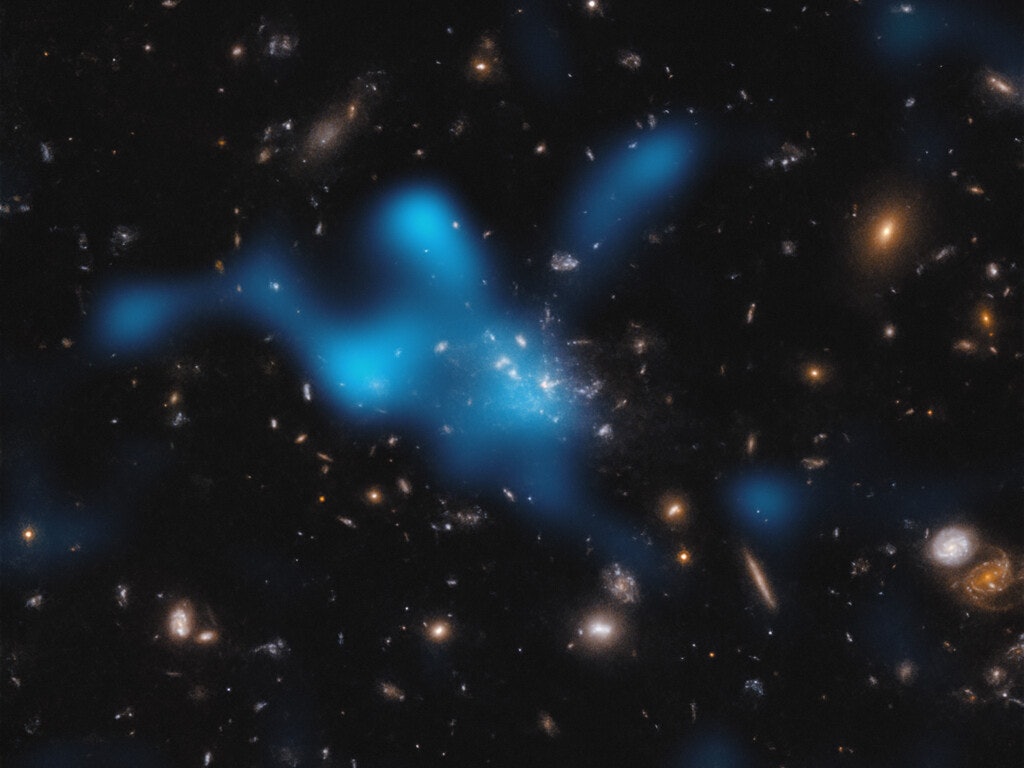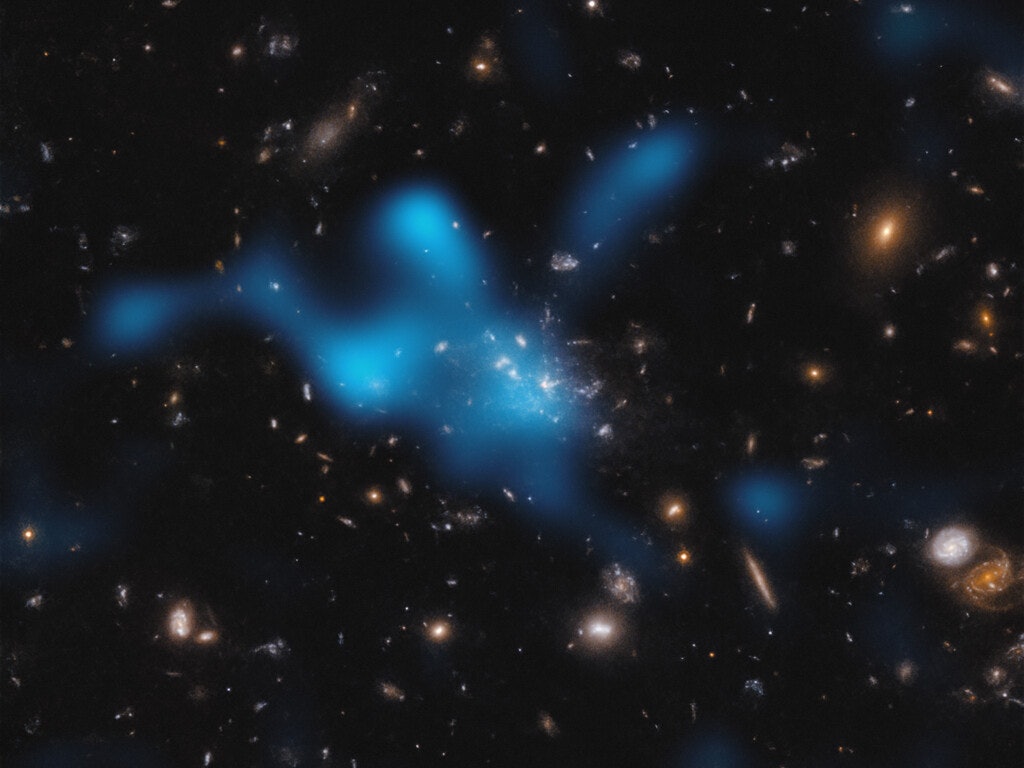
Astronomers studied a distant galaxy cluster by measuring its silhouette against the Cosmic Microwave Background, the last light of the Big Bang.
As this static-like pattern of microwave radiation filters through a massive cloud of hot gas in the distant Spiderweb galaxy cluster, it picks up a little boost of energy from fast-moving electrons in the gas. The added energy shortens the wavelength of the Cosmic Microwave Background, making it just a little bluer.
Astronomers watching through the Atacama Large Millimeter/submillimeter Array, a telescope in the high desert of Chile, see that effect as a shadow against the omnipresent CMB, which traces the shape and mass of the hot gas swirling into one of the oldest, most distant galaxy clusters we’ve ever observed. The team, led byUniversity of Trieste astrophysicist Luca Di Mascolo, released its findings in the journal Nature this week — and the startling images to go with them on the European Southern Observatory’s website.

ALMA sees the Spiderweb cluster as it looked 10.8 billion years ago: a group of young galaxies, all busily churning out new stars, locked together by their mutual gravitational pull. The mass of all those galaxies draws in gas from the surrounding universe, which gets warmer as it falls inward toward the center of the cluster. Astronomers have studied the Spiderweb for years, and they’ve mapped the filaments of cold gas stretching between the galaxies — but theories predict that there should be hot gas, too, in enormous quantities.
“Finding a large reservoir of hot gas in the Spiderweb protocluster would indicate that the system is on its way to become a proper, long-lasting galaxy cluster rather than dispersing,” writes the European Southern Observatory, which operates ALMA, in a statement.
And the Spiderweb has a long, promising future ahead of it, apparently. Silhouetted against the CMB, Di Mascolo and his colleagues saw a cloud of hot gas, called the intracluster medium, thousands of times larger than the cold gas astronomers had already seen in the cluster. The gas is blazing at tens of millions of degrees centigrade, and some of it will eventually fuel new star formation in the galaxies that make up the cluster. Its enormous mass — much more than that of the galaxies themselves — will also help hold the cluster together and draw in more material.
Over the next ten billion years or so, the cluster will keep growing until it's about ten times larger than the version ALMA recently imaged. Of course, the fact that it takes light time to travel through the universe means that somewhere out there, the Spiderweb Cluster has already grown to that gargantuan size, but the light won’t reach us for another ten billion years. By then, our Sun will already have swollen into a red giant and engulfed our poor little planet, so ALMA won’t be able to measure the changes in the Spiderweb directly.







